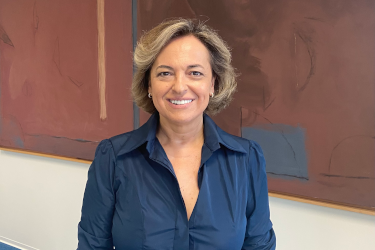28/11/2014
PATIENTS WITH LOW BACK PAIN ON SICK LEAVE FOR MORE THAN SIX MONTHS NEVER RETURN TO WORK
About 80 percent of the population suffers from a bout of low back pain (lumbago) at some point in their life. It is the most frequent cause of physical disability, the first reason for sick leave in industrialized countries, and the first reason for temporary incapacity.
Only common colds outdo low back pain in the number of Primary Care visits.
Its high prevalence makes it a major health issue that requires a multidisciplinary approach coordinated by the different specialties.
"It is a major health issue". This is how experts have defined chronic low back pain, singled out at the IV ESTEVE Symposium on Analgesia held in Barcelona and Córdoba, attended by more than 600 professionals in multiple specialties. Among the major challenges still unmet, these experts have emphasized diagnostic difficulties, the prevention of chronicity, and the need for an integrated therapeutic approach and multidisciplinary management, where a good coordination between the various specialties will provide the best possible benefit to the patient.
According to Dr. Concha Pérez, Head of the Pain Unit of the Princesa University Hospital and spokesperson of the Spanish Society of Pain Management (SED), "the prevalence of this disease is very high. Eighty percent of back pain is low back pain (lumbago). Twenty percent of the population is estimated to be affected by chronic pain, of which about 70 percent have low back pain. Lumbago is severe in one third of the cases and is frequently associated with a neuropathic component, which makes treatment considerably difficult".
As family doctor and coordinator of the Pain Group of the Spanish Society of General and Family Doctors (SEMG) Dr. Juana Sánchez pointed out, "Only common colds outdo low back pain in the number of Primary Care visits".
Presently, low back pain is already the second reason for sick leave in Spain -data from the Society of Occupational Medicine- and a very frequent reason for disability and chronic pain. According to Dr. Sánchez, "the average number of days on sick leave due to acute lumbago is approximately 41 days a year". In addition, "less than 50 percent of patients with low back pain on sick leave for more than six months will return to work -and a mere 25 percent will do so if the leave exceeds one year. That is why an early approach -multidisciplinary where needed- would improve the prognosis of this highly complex condition and prevent chronification", Dr. Pérez stated.
"Low back pain is defined as chronic when it lasts more than three months. The economic burden is another problem related to chronic lumbago, not only with regard to healthcare costs but also to indirect costs associated with sick leave, disability, etc.". This places a major burden on the healthcare system. "While the economic costs of low back pain in Spain have not been established, they're up to 1.7 billion pounds a year in the United Kingdom".
The main risk factors for lumbago include sedentary activities, overweight and obesity, working life -involving loading and unloading tasks-, and unhealthy habits. Congenital anomalies and elderliness, with predominantly degenerative processes, should also be considered.
The main risk for chronification is the lack of physical activity. According to Dr. Xoan Miguens, Head of the Department of Rehabilitation of the Integrated Management Area of Ourense, Verin and O Barco de Valdeorras, "the lack of physical activity is contraproductive. Resting periods should be as little as possible. Also, patients operated on have shown high-intensity therapeutic exercise to be more effective than low-intensity exercise." As Dr. Frederic Font, Chief Clinical Officer of the Brain Surgery Unit of the Bellvitge University Hospital categorically states, "the best way to prevent low back pain is exercise. In the past, most jobs were physical and back pain was less frequent. Jobs are now more sedentary in nature, and this is a risk factor".
Correct diagnosis, integrated approach, and multidisciplinary team
Diagnosis is a major unmet challenge in chronic low back pain. All the more so because its high prevalence makes it a major medical concern. According to Dr. Pérez, "this complex condition makes it difficult to accurately diagnose the cause of pain. In addition, chronic low back pain involves many external and internal factors which frequently impair treatment efficacy".
Lumbago is a complex condition in 20-25% of cases. "These are the most complicated patients, where we professionals find more difficulties". Experts have agreed that chronic lumbago is a multifactorial disease requiring an integrated therapeutic plan and a multidisciplinary approach.
The integrated therapeutic plan includes personalized multidimensional interventions agreed with the patient to reduce pain severity by addressing healthy lifestyle, pharmacology, psychology, and rehabilitation. "Chronic lumbago is a disease that affects the patient's life in many and multiple ways".
Regarding multidisciplinarity, Dr. Sánchez says that "treating pain is a duty of us all, and we professionals actually need a better coordination among ourselves to approach pain management".
According to Dr. José Luis Zubieta, director of Radiodiagnosis of the University Clinic of Navarra, "multidisciplinarity is a key factor in teams of rheumatologists, clinicians, surgeons, rheumatologists, radiologists,
". Dr. Jesús Tornero, Head of the Rheumatology Service of the University Hospital of Guadalajara, adds that "because referral protocols should not be conducted separately, only one protocol including the relevant disciplines should be used. We must solve this together, along with health authorities".
One of the consequences of lacking a unique, properly established referral protocol is that, at times, patients who could otherwise be treated in Primary Care or by specific specialties are directly referred to Pain Units, where only the most complexes cases should be referred. This adds to the fact that "184 Pain Units are currently ongoing in Spain, a clearly insufficient number on account of lumbago's high prevalence. We are also below the mean number recommended by the EU, and more coordination among the different specialties is needed", Dr. Pérez stated. Also, "neuropathic pain, particularly mixed neuropathic pain (like lumbago), is one of the most frequent conditions referred to Pain Units".
There is still a lack of consensus on the indication for surgery
In his speech, Dr. Font noted that "there is a clear lack of clinical evidence as to which cases of low back pain are indicated for surgery". This issue is still pending. "Only in the past few years, 6 papers attempting to establish the indication for surgery in these cases have been published, versus 35 papers comparing different types of surgery". As Dr. Font stated, "having a conservative treatment organized and the patient studied as a whole is essential. Indeed, surgery is a very valid alternative in selected cases. For example, 80% of disk hernias heal by themselves with a conservative treatment, and only 15% may require surgery".
Dr. Pérez said that "an accurate diagnosis of the condition and of the indication for surgery is essential, as Dr. Font noted. In fact, wrongly indicated surgery and poor examination do not lead to improvement, but rather worsen the condition. It is important to understand that the backbone is a complex structure and that pain may be caused by ligaments, or by muscles, or by bones, or by nerves
Despite all this, it is important to emphasize that, even if the diagnosis and the indication are correct, a percentage of patients will still suffer from low back and/or sciatic radicular pain after appropriate surgery".
ESTEVE's commitment to analgesia
ESTEVE's Scientific Director Dr. Carlos Plata explains that the company's strategy in this area is based on three pillars: "the search for new, first-in-class drugs against different types of pain; a holistic approach to patients with pain syndromes -bearing in mind the different comorbidities; and a network of excellence with cutting-edge centers able to boost this R&D".
One project focuses on E-52862, a new chemical entity with an unprecedented mechanism of action. This selective sigma-1 receptor antagonist has already progressed to clinical phase II and -pending the completion of research- could be a drug with a completely new mechanism of action discovered by a Spanish company to treat severe chronic pain and neuropathic pain.
Another project focuses on the new therapeutic entity E-58425, a new co-crystal made up of two active substances: celecoxib and tramadol. This project has currently completed clinical phase II for the treatment of moderate to severe acute pain. The available data already suggest a much better efficacy and safety profile as compared to the administration of the gold standard active comparator".
You can follow ESTEVE on Twitter at this link: twitter.com/esteve_news.



